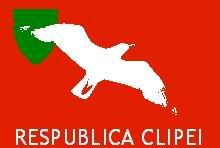Iansisle

| |
| Flag of Iansisle | |
| Motto: "Debate Triumphs Over All" | |
| [1] | |
| Region | NPIG |
|---|---|
| Capital | Ianapalis |
| Official Language(s) | English |
| Leader | King James I; Premier Charles Bradsworth |
| Population | c. 320,000,000 |
| Currency | General |
| NS Sunset XML | |
Contents
Overview
The United Kingdom of Iansisle is the primary state which grew out of the collapse of the Grand Empire of the Shield. The others are the Socialist Democracy of Wyclyfe, and the Javian Kingdom of the Foothills. The United Kingdom consists the former kingdoms of Shadoran, Vesshampton, Weshield, Mansford, Thortraia and the Archduchy of Sentry Island.
Formation of the United Kingdom
After the corporatist powers which had occupied Ianapalis (see Corporate Yoke) withdrew on 3 August 1952, Charles Bradsworth set about remaking the old empire. The Combined Parliament became the Constituent Assembly, which was itself renamed the National Assembly on 18 May when the new constitution came into effect. The High King of the Empire became the King of Iansisle and Emperor of Gallaga. Nearly all major companies, especially those which had participated in the Corporate Yoke, were nationalized. Bradsworth himself became the Premier Interim of the Provisional Government of the United Kingdom before winning 116 of 225 votes in the elections of 18 May 1953 and assuming the full office.
The National Assembly
The Assembly consists of two hundred and twenty-five representatives elected biyearly by the two hundred and twenty-five districts of the United Kingdom. The Assembly is then broken down into twenty-two directorships, each with its own committee of four and a Director. The Director, on the advice of the committee, submits legislation from his directorship’s area to be voted on by the full Assembly. Directors and committee members are elected by the Assembly to their position after the general elections. Debates are supervised by the Premier, who can also introduce his own legislation for general vote.
The first elections of 18 May 1953 showed strong support for the Revolution, though royalist candidates captured many more districts than were expected. Currently, there are no officially declared or recognized parties on the Shield; however, 134 Assemblymen can be considered solidly pro-revolution (118 for Bradsworth and 16 for Madders) and some 70 can be considered solidly royalist.
The Premier
Unlike the Prime Minister of the Combined Parliament of the old Empire and Commonwealth, the Premier of the Assembly is elected by a nationwide vote. The Premier serves as the head of government and appoints all directors. Each district elects one Assemblyman and gives one vote to the candidate who won the local popular vote.
Charles Bradsworth, running on a relatively moderate revolutionary platfrom, won 116 of the 225 districts in the elections of 18 May 1953, compared with 16 for Lawrence Madders, an extreme reformist, and 90 for the Baron Destian, a moderate royalist.
The Monarchy
The King of Iansisle doesn’t have quite the same level power of power as did the High King of the Empire. Although his agreement is still needed for most legislation, the Lord Privy Seal can now sign documents against the King’s will. The monarchy mostly exists to placate conservative forces within the United Kingdom.
The royal line is the House of Callahan, the monarchs of Shadoran and the royal family of the Grand Empire. The King lives in Dûn Ádien, the castle on Ian’s Island which has served as the home of House Callahan since the razing of Dûn Shadoran in 1697.
The Empire and Gallaga
The Grand Empire bequeathed a number of colonies in South East Asia, centered around the island of Borneo, and Troobodia Bay, most notably Dianatran, to the United Kingdom. However, with the nationalization of the East Gallaga Company, the United Kingdom was faced with the problem of administering a country three times as large as itself with more than six and a half times as many people.
A quick solution had to be found, and the Assembly quickly readopted the Gallaga Act of 1750. Although the language and social structure was all wrong, it would have to do. Richard Appleton was elected Director of the Gallaga Office by the Assembly, and he appointed the Earl of Furthingham as the fifty-second President of the Council of the New Shield but only the second Governor-General and Viceroy of Gallaga. The King also reassumed the title Emperor of Gallaga.
